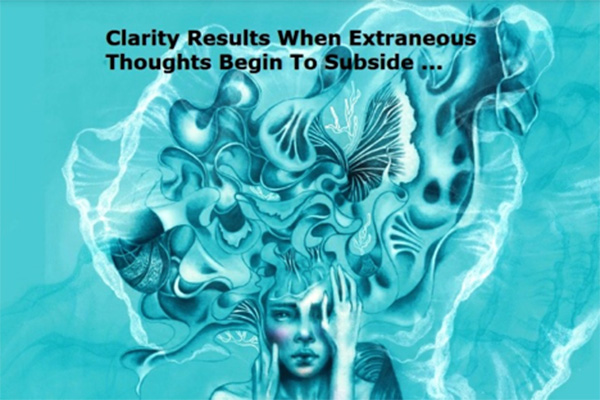Chapter 1 – Concentration/Samadhi Pada – Part 15
Types of Engrossments – Yoga Sutras (1.42-1.43)
Overview: When the mind becomes concentrated and the extraneous thought patterns begin to subside (as a result of the persistent practice of one-pointed meditation), the mind can then be not only concentrated, but also more thoroughly engrossed in the object of meditation. It is a sort of inner expansion of attention on the object of meditation, and that engrossment is called samapattih.
Now the sutras …
Yoga Sutra (1.42) – tatra shabda artha jnana vikalpah sankirna savitarka samapattih. Tatra means there, among these. Shabda is sound, word or name. Artha means object, form, or meaning. Jnana is knowledge or idea. Vikalpah means conceptualization (with options). Sankirna is mixed with or distorted. Savitarka Samapattih is a specific form of samapatti (Savitarka is sa = with + vitarka = gross thoughts. Samapattih is Samadhi, engrossment, absorption or state of enlightenment).
Translated this means – This specific type of such an absorption (samapattih) is one in which there is a mixture of three things, a word or name given to the object, the meaning or identity of that object, and the knowledge associated with that object. This absorption (engrossment or state of enlightenment) is known as savitarka samapattih (associated with gross objects).
Swami Satchidananda interprets this sutra as: “The samadhi in which object, its name, and conceptual knowledge of it are mixed is called savitarka samadhi, the samadhi with examination.”
In his commentary Vācaspati Miśra implies that at its root this sutra is about the confusion of unity with diversity. Because of our preconceptions, that which we believe is an understanding of unique phenomena is a combination of three diverse elements (name, form, and knowledge). We know that the world really is a complex series of objects and interactions. But if we want to more fully comprehend our true surroundings, we need to gain a better understanding of each of the individual components.
The practitioner needs to develop the initial ability to allow the typically noisy, chattering conscious mind to become still. After that there comes an opportunity for them to discriminate between these three different aspects of how a mental object is constructed. These three are:
- The given Name that represents the object.
- The specific Object being observed.
- The inherent Nature of that category of object.
After enough practice, the meditator gradually comes to realize that all our attractions, aversions and fears, as well as our conceptions, perceptions and opinions are all mental constructs. This process of discrimination will continue to get ever more subtle until the final discernment between the subtlest aspect of mental process and pure consciousness (Purusha) is achieved.
Yoga Sutra (1.43) – smriti pari-shuddhau svarupa-shunya iva artha-matra nirbhasa nirvitarka. Smriti is memory or previous impression. Pari-shuddhau means purged or upon purification (pari = upon; shuddhau = purification). Svarupa-shunya is empty of its own nature (shunya = devoid, empty of; svarupa = its own nature). Iva is as if or as it were. Artha-matra means only the object (artha = object; matra = only). Nirbhasa is luminous, radiant or shining brightly. Nirvitarka means without a gross thought (nir = without; vitarka = gross thought.
This sutra is translated as – When the memory (or accumulations of previous impressions) is purified, the mind then appears to be devoid of its own nature. Then only the object on which it is contemplating appears to shine forth. This type of absorption (or engrossment) is known as nirvitarka samapattih. Swami Vivekananda translates this sutra thusly: “The Samadhi called without reasoning (comes) when the memory is purified, or devoid of qualities, expressing only the meaning (of the meditated object).”
Nirvitarka is the concentration on a gross object in which the extraneous gross level activities in the mind have subsided due to the memory having been purged or purified. This is the second of the four types of absorption (engrossments) on a gross object.
Take note that with savitarka, there was not only meditation on the object, but also there were the other streams of gross thoughts in the mind (sutra 1.42), though these were not distracting because of vairagya (non-attachment). Here, in nirvitarka (sutra 1.43), these thought patterns have subsided.
~Rae Indigo
Stay tuned, up next: Part 16, “Types of Engrossments”, cont. – Yoga Sutras (1.44-1.46)
